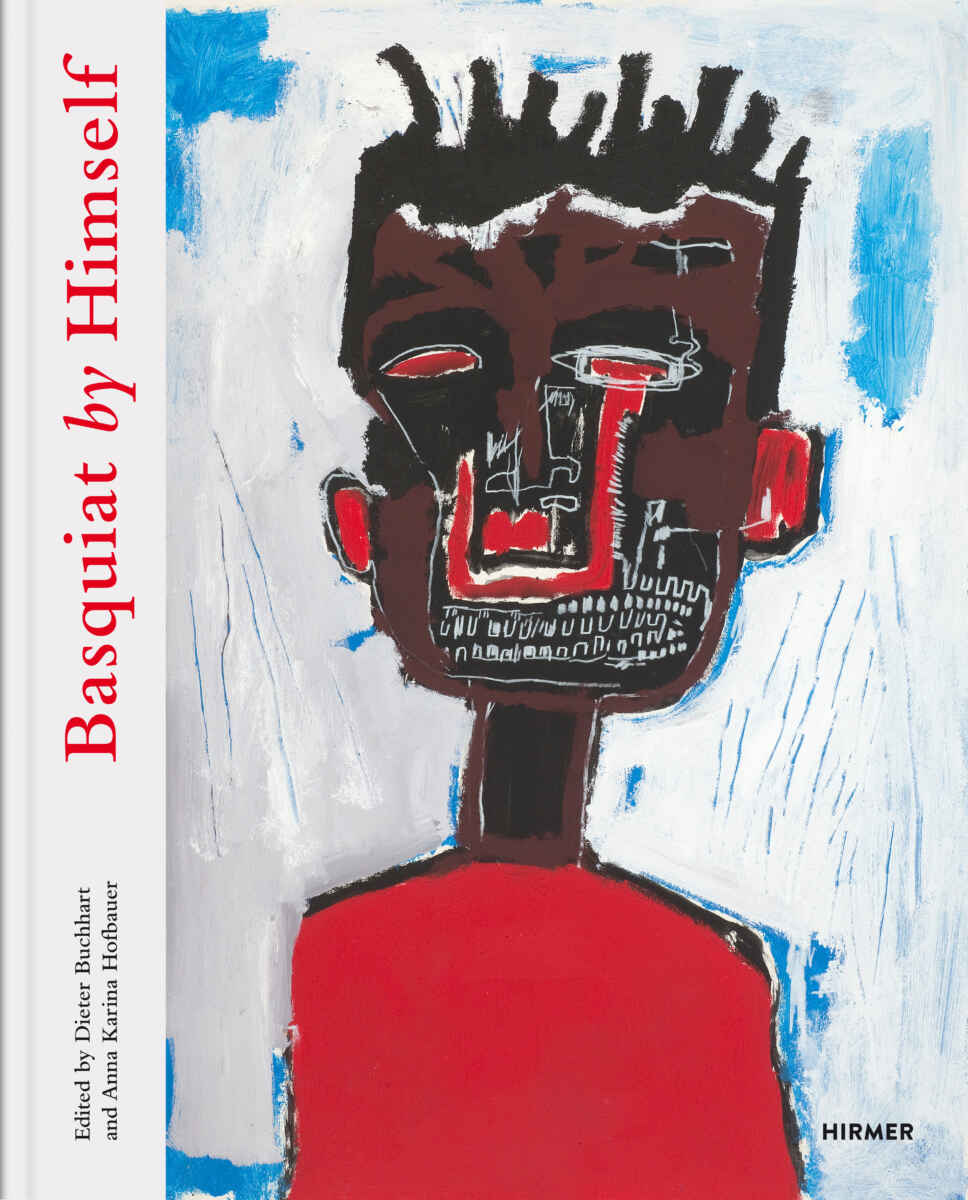
According to Nicholas Cullinan’s forword to Basquiat by Himself, this is the first book entirely devoted to Jean-Paul Basquiat’s self-portraits (Amazon.com, Amazon.co.uk, Amazon.fr, Amazon.de). The publication assembles some 60 self-portraits by the artist, 130 color illustrations and contributions by Dieter Buchhart, Nicholas Cullinan, Michael Halsband, Anna Karina Hofbauer, Lee Jaffe and Liz Rideal, including a chronology and an interview with the Swiss galerist Bruno Bischofberger.
Jean-Paul Basquiat was a painter, draughtsman, musician, DJ, actor, and poet. He died young (December 22, 1960 – August 12, 1988) but rose to fame before, notably thanks to his connection to Andy Warhol; Warhol and Basquiat were formally introduced to each other in the fall of 1982 by the Swiss art dealer Bruno Bischofberger. They quickly formed a personal and professional relationship.
The Director of London’s National Portrait Gallery, Nicholas Cullinan, rightly stresses that Jean-Paul Basquiat foreshadowed the digital era by sampling, cut-and-paste, from his surroundings. He found inspiration in everyday life and popular culture such as cartoons, children’s drawings and advertising. At the same time, he was inspired by Aztec, African and western art. He combined the energy of downtown New York’s streets with painterly tradition, both figurative and abstract.
According to Nicholas Cullinan, Basquiat had the desire to express his African-American experience. Nowhere was this more evident than in his self-portraits. They are not only inextricably linked to the social, political, cultural and historical context in which they were created, but also speak openly about this context.
In the digital age with an overdose of selfies, Facebook, Instagram and Snapchat, the interest in identities, self-portraiture and representation has never been greater. In his foreword to Basquiat by Himself, Nicholas Cullinan reminds us that the first self-portrait of an artist that we are aware of was created by Peter Parler the Younger, who included himself in a series of busts of the benefactors of the Prague Cathedral that he executed between 1379 and 1386. The Director of the National Portrait Gallery then goes on to compare Jean-Paul Basquiat to Rembrandt van Rijn, the most prolific creator of self-portraits, ranging from the time of his youth until old age, underlining that both artists had pushed forward the genre of self-portraiture.
Basquiat by Himself documents Basquiat’s rejection of conventional rules and regulations, leading him to a unique approach to self-portraiture. Nicholas Cullinan writes that, while none of the works in this groundbreaking book can be described as true likenesses, they form a strong argument for defining a (self-) portrait as capturing the essence of the sitter, instead of being merely mimetic.
Basquiat’s interest in anatomy dates back to a childhood accident that left him bedridden and studying Gray’s Anatomy, a book his mother had given him as divertissement. Some works document Basquiat’s intense engagement with racism and prejudice, others offer fragments of his biography, of his self, that we must piece together to fully grasp the intended self-portrait. According to Nicholas Cullinan, what sets Basquiat’s self-portraiture apart from others is that within each work the manifold glyphs, marks, symbols and words animate the narrative, complicate it, provide counter-narratives and arguments.
Basquiat by Himself traces the artist’s output chronologically, thereby revealing changes in style and method. It opens with the pivotal year 1979, when Basquiat, together with Jennifer Stein, began Xeroxing their Anti-Baseball Card Products. Dieter Buchhart’s essay brings to life the artist’s working techniques and his search for intellectual solutions to the problem of self-representation. Liz Rideal offers an art historical contextualization of Basquiat’s practice. Basquiat by Himself aims not only to offer us a deeper understanding of Basquiat himself, but also of the astonishing radicalness of his artistic endeavor. According to Nicholas Cullinan, Jean-Paul Basquiat’s multifaceted debate on socio-political issues concerning discrimination and prejudice as well as exploitation and suppression are reflected in his self-portraits perhaps even more strongly than in other works.

Dieter Buchhart, Anna Karina Hofbauer, ed.: Basquat by Himself. Hirmer, 2020, 25 x 31 cm, 184 pages with 130 color illustrations and contributions by Beiträge von D. Buchhart, B. Bischofsberger, N. Cullinan, M. Halsband, A.K. Hofbauer, L. Jaffe, L. Rideal. Order the English book from Amazon.com, Amazon.co.uk, Amazon.fr, Amazon.de.
This review is based on the book Basquat by Himself. For a better reading, quotations and partial quotations in this review are not put between quotation marks.
Book review added on March 25, 2020 at 17:08 Swiss time.